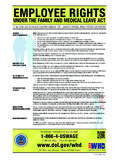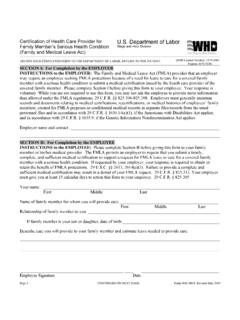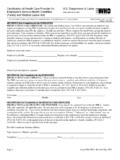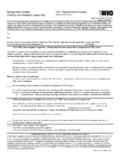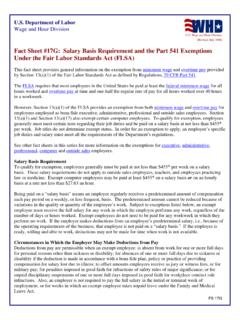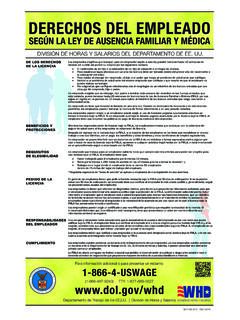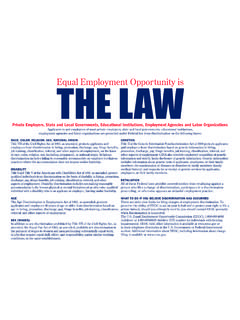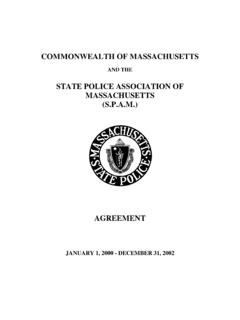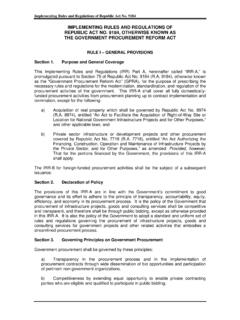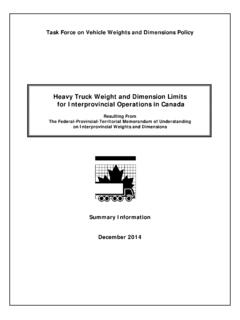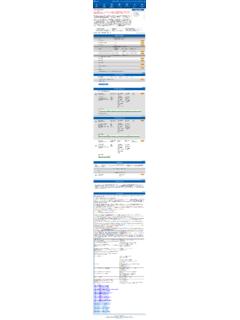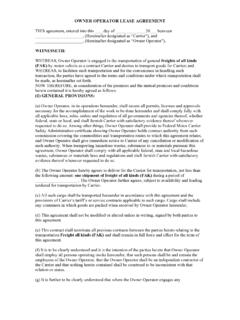Transcription of Licensing and Certification for Veterans
1 Licensing and Certification for Veterans : State Strategies for Successfully Removing BarriersEMPLYOMENT AND TRAINING ADMINISTRATIONVETERANS EMPLOYMENT AND TRAINING SERVICEUNITED STATES DEPARTMENT OF LABOR Twenty-five million Veterans are living among us today. These men and women selflessly set aside their civilian lives to put on the uniform and serve us. Steve BuyerUNITED STATES DEPARTMENT OF LABORLICENSING AND Certification FOR Veterans : STATE STRATEGIES FOR SUCCESSFULLY REMOVING BARRIERS1 Table of ContentsAcknowledgements 2 Introduction 3 Barriers 5 Strategies to Address Barriers to Veterans
2 Licensing and Certification 61. Recognizing Equivalent Military Training and Experience 72. Providing Accelerated Training Opportunities 83. Streamlining Administrative Processes and Rules 10 The Blueprint: Successful Implementation of State Strategies in Seven Steps 11 Step 1: Assemble a Team 12 Step 2: Select the Occupations 13 Step 3: Understand Civilian Employment Requirements and Stakeholders 14 Step 4: Understand Military Occupational Specialties 15 Step 5: Produce Gap Analysis to Identify the Appropriate Strategy 17 Step 6: Market to Veterans 19 Step 7: Develop an Assessment Plan 20 Implementation Barriers and Supports 21 Overcome Implementation Barriers 21 Implementation Supports 22 Conclusion 24 General Resources 25 Occupation Specific Resources from Demonstration 26 Bus and Truck Driver 26 EMT/Paramedic 27 Law Enforcement 28 Licensed Practical Nurse/Registered Nurse 29 Physical Therapy Assistant 30 UNITED STATES DEPARTMENT OF LABORLICENSING AND Certification FOR Veterans .
3 STATE STRATEGIES FOR SUCCESSFULLY REMOVING BARRIERS2 AcknowledgementsThe majority of this guide has been taken directly from the September, 2015 Report Veterans Licensing and Certification Demonstration: A Summary of State Experiences, Preliminary Findings, and Cost Estimates. As such, the acknowledgments for that Report have been reproduced in their entirety below:This report was prepared by a team led by Brent Parton with the National Governors Association Center for Best Practices (NGA Center) and Amanda Dunker, formerly with the NGA Center. The report includes significant contributions from a broader project team including Martin Simon and Alisha Powell with the NGA Center, and Elise Shanbacker and Iris Palmer, formerly with the NGA Center.
4 The report additionally benefitted from the contributions of the team at Solutions for Information Design (SOLID), including Ed Davin, Karen White, Lisa Lutz, and Bill Brigman. Valuable peer-review comments were provided by David Moore, Elliot Schwartz, and Jennifer Brooks (NGA Center); and by Gloria Salas-Kos and Pamela Frugoli ( Department of Labor). We also express our gratitude for the substantial support received from the staff of several other Federal Agencies and national organizations during the planning and implementation phases of the state demonstrations and the NGA Policy Academies. Contributors to the planning, implementation and the NGA Policy Academies include: Marion Cain from the U.
5 S. Department of Defense (DoD) (Readiness); Commander Mitchell Seal, Medic Education and Training (Ft. Sam Houston); Doctor Maryann Alexander, National Council of State Boards of Nursing; Dia Gainor, National Association of State EMS Officials; Severo Rodriguez and Terry Markwood with the National Registry of Emergency Medical Technicians; LTC Arturo Calzadillas, Jr. with Soldier for Life; Selden Fritschner, U. S. Department of Transportation Federal Motor Carrier Safety Administration; Dr. Leslie Adrian of the Federation of State Boards of Physical Therapy; John Awtrey, Law Enforcement Policy and Support, DoD; Steve Gonzales, American Legion Veterans Employment and Training Division; Rodrigo Garcia, Student Veterans of America; and Bob Simoneau of the National Association of State Workforce STATES DEPARTMENT OF LABORLICENSING AND Certification FOR Veterans : STATE STRATEGIES FOR SUCCESSFULLY REMOVING BARRIERS3 IntroductionMilitary servicemembers on active duty are the beneficiaries of extensive training that prepares them to perform in a wide range of occupational specialties.
6 Many of those occupational specialties have direct or proximate equivalents in the civilian workforce, but transitioning servicemembers might lack the relevant civilian occupational credentials required under federal or state law or by an employer to secure employment. Despite their relevant skills and experience, Veterans can encounter lengthy processes and requirements to obtain the credentials needed to enter civilian employment. These barriers can impose additional time and financial costs on Veterans and taxpayers, who pay both for the initial military training and for re-training outside of the military, primarily through Veterans federal education response, the federal government has undertaken several initiatives to streamline and accelerate civilian Licensing and Certification for current service members and Veterans .
7 The initiatives undertaken resulted from new intergovernmental efforts across Federal agencies, including the military, to identify equivalencies between military and civilian occupations and provide civilian credentials. The ultimate authority for regulating entry into most professions lies with state governments. Although Federal agencies and national professional associations can propose standards and guidelines, state Licensing boards make final decisions about whether alternative pathways are adequate to uphold public safety standards based on professional requirements, occupational skill competencies, and state laws and regulations.
8 The nation s governors recognize that authority and have made the transition for Veterans from military service to civilian life and employment a priority in the states. Thirty-nine states issued executive orders or passed legislation to assist Veterans with recognizing and transferring skills gained in military service to civilian employment between 2013 and 2015. In addition, for Commercial Driver s Licenses (CDLs), all 50 states have implemented the Military Skills Test Waiver according to the specific administrative procedures applicable within each state. In November 2015, I started thinking about my career outside of the military and the direction I wanted to go.
9 I immediately gravitated toward the trucking industry because I was a truck driver in the Marine Corps. While I was back in Florida for a non-commissioned officer course, I took the time to get my class A CDL through the Military Skills Waiver Test so I would be prepared when the time came to transition out of the military. Sgt. Richard Stewart United States Marine Corps UNITED STATES DEPARTMENT OF LABORLICENSING AND Certification FOR Veterans : STATE STRATEGIES FOR SUCCESSFULLY REMOVING BARRIERS4 Although critical for elevating the importance of accelerating employment pathways for Veterans , legislation and executive orders can only go so far to help Veterans transition to civilian employment.
10 States encounter a range of challenges implementing the related policies and subsequent requirements amid the complexity of state licensure and third-party Certification systems. This guide is intended to help states move beyond the legislative and policy intent of making Veterans a priority to the design and implementation of accelerated pathways to licensure and Certification for 237 of the Veterans Opportunity to Work to Hire Heroes Act of 2011 (VOW Act) authorized the Department of Labor Veterans Employment and Training Service (DOL-VETS) to carry out a demonstration project for the purpose of facilitating the transition of members of the Armed Forces from service on active duty to civilian employment.
